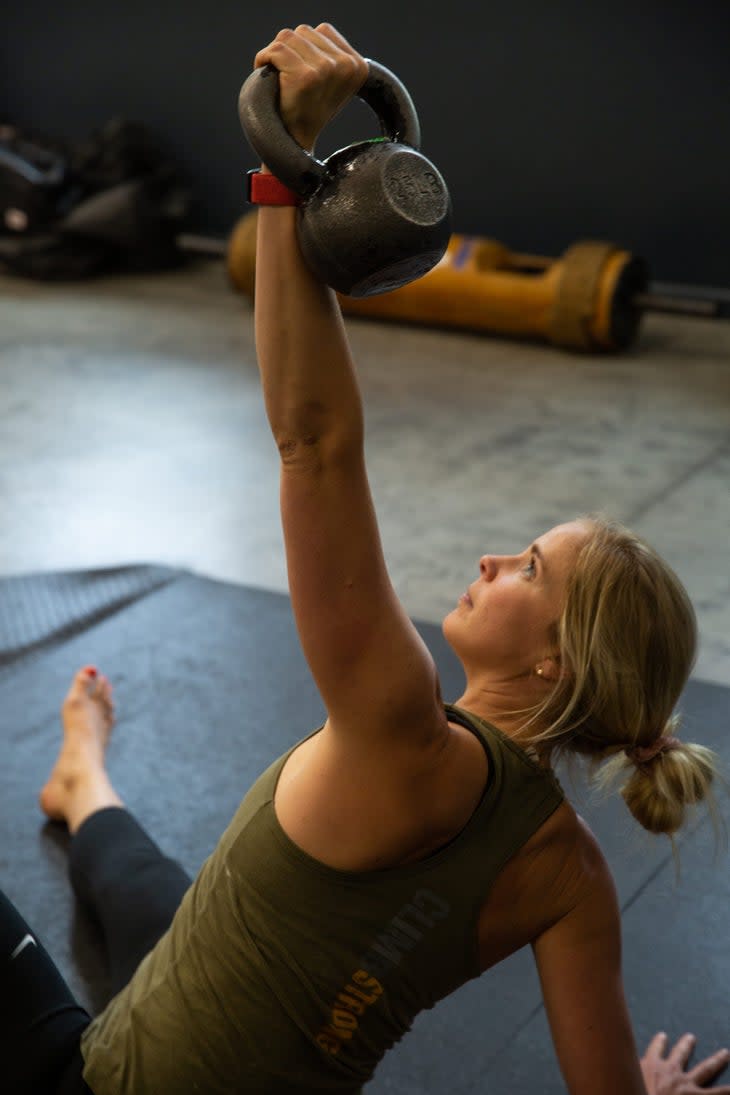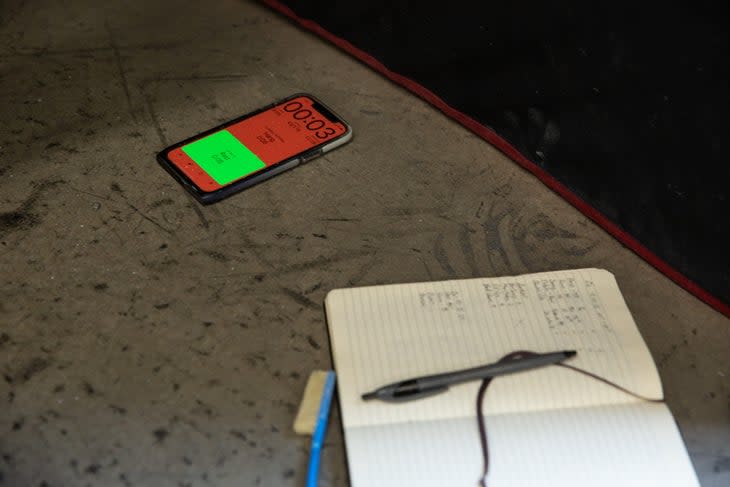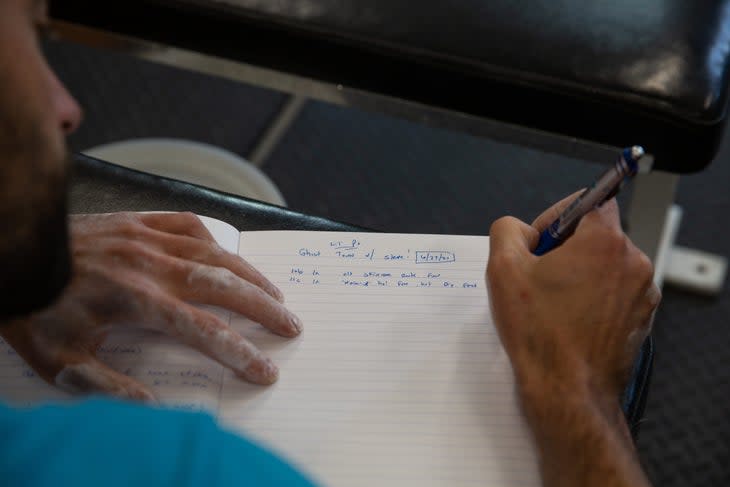Stop Bragging About How Much You Train—The Science Says Quality Beats Quantity
This article originally appeared on Climbing
I am generally suspicious of people who talk about how much they work at their jobs. I don't tend to be impressed by someone who spends more than half a day (12 hours) "working" at a bank or sitting at a desk or even coaching climbers. This is because the research does not in fact show a lot of high-quality work coming out of 12-hour days. Quality comes from focused effort on tasks rather than endless minutes spent sitting in front of, but not actually diving into, said tasks. In my line of business--coaching climbers--I'd much rather see coaches climbing and reading and spending time with climbers than sitting in front of a computer "coaching" all day long; I'd rather see them work deeply and effectively for two hours, then head out the door.
Estimates vary, but a recent survey found that the average knowledge worker (a person who sits in front of a computer, for the most part) is on a project-related task around 10-15 minutes of every hour of "work." The rest of their time is consumed by checking notifications, chatting with co-workers, responding to emails, and, maybe, listening to a podcast.
The same is true of many athletes. Yes, I know that a good bouldering session requires a lot of rest, and 30 minutes between send goes at the crag is about right, but in our training, lots of time (and quality of effort) is wasted. When training, if we really want to get things done and have other things on our schedule, getting after it is key. So while 20 minutes of warm-up, 30 minutes of easy problems, and lots of chatting in between burns can be fun, it's not an effective use of your time at the gym.
In fact, when training, we tend to address non-performance training, such as hangboarding, stretching, and strength training, as things to get done with rather than things to do. We look to check the box and move on, not understanding that putting focus into each and every part of our physical training enhances its development--and will in turn enhance our climbing.
One common problem is that many of us have been climbing and training for a long time. It's hard to re-engineer old habits, and simply vowing to "train better" is not going to work. The most effective way to pursue quality practice is to step out of your routine and begin a new style of practice, then take your new and improved habits back into the other facets of your training.
Below are five key tips that will help you do higher-quality work in your training.

1) Learn a novel, complicated task
The simplest way to get better is to pick out a task or exercise that you haven't yet mastered and pursue mastering it. For a longtime climber, "Getting better at heel hooks" might be too difficult to hang with, since maybe you're already pretty good with your heels--it's hard to have breakthroughs on a skill at which you're already proficient. Instead, consider learning and mastering a complex strength exercise that's new or nearly new to you, such as the Turkish Get-Up or the Kettlebell Snatch.
This process would involve reading about the exercise, watching videos, and potentially hiring an expert to coach you. It should be something that you have very little experience with, so that your learning curve can be quite steep. Similarly, you could try to learn advanced kneebar technique, offwidthing, or advanced roof movement.
Over time, you can start to apply the habits and rigor you used to gain these new skills to refine and enhance skills you've already ingrained, like heel-hooking.

2) Track your progress quantitatively and qualitatively
It's important to track training, and in this case track your efforts on developing skill. After the first few years of climbing, you simply can't trust that a couple of hours in the gym will provide you with any stimulus for improvement. With this in mind, you should track the time, number of repetitions, and exact nature of your practice using an app, training log, or notebook. This will paint a good picture of how long it takes you to hone a new skill.
You should also make note of the quality of your efforts. Comments like "Felt shaky today" or "Movement seemed to get better with each try" can be useful, and will create an emotional connection back to that practice. A simple list of problems and grades won't give you much to reflect on, especially as time goes by and you forget the particulars of those problems and the skills they were meant to cultivate.
I am especially adamant that athletes note proud moments in training, times when they feel like they "got it" or gave an especially good effort. On efforts where you made yourself proud, a simple checkmark or star in the training log will help you remember these good efforts, and aim to increase their frequency in the future.
3) Train the way you perform
No climber in his right mind would go up on a project still tired from the last burn, deliberately seek out a mega-pump, and climb badly just to make it harder on himself. It sounds crazy, but this is how many of us pursue training--with an aim toward getting as fatigued as possible as quickly as possible. This is not quality training.
Instead, we should allocate more time to our sessions, allow for more rest between exercises, problems, and routes, and give our bodies the chance to do well in training. The more we rest, the better our performances in training; and the better our performances in training, the better our climbing becomes.
But what about people with a full plate? How do you deal with resting enough between hard goes, and still get a quick session in at the gym? There are a few solutions, and most require being flexible and open-minded. For example, instead of crushing yourself with a 4×4 workout with just 5 minutes rest between intervals (a surefire way to be tired, but unlike anything you'd do at the crag), take 10 to 15 minutes between, do your flexibility training and some core work during that interim, and then come back to each of your four sets fresh and ready to fire.
4) Create a system to regain focus
Quality is about attention. It is easy to get sucked into bouldering on autopilot or to just count reps in the weight room. However, as soon as our mind slips into trying to "get this thing over with," we need to find our way back to intention and to mindful training.
For some athletes, a keyword helps. My own favorite is "Come on!", which works to prod me back into the present. You could always try George Costanza's "Serenity now!" For others, a habit of breathing and refocusing between exercises seems like the way. Also, for me, simply looking at the next planned problem or drill, remembering what today's training goal is, and thinking of what I am training for can always get me back to where I need to be.
5) Work in a zone where mistakes happen
The final point is to remember that unless you are pushing your ability, your body has no reason to adapt. Unless you are trying moves or skills that really push your ability to send, or use holds you truly have to work for, you might not be asking enough of your system.
My friend Keith Lennard used to talk about "no no-falls days" at the crag. He simply meant that we should always be trying hard enough climbing that we're operating near our limits--and perhaps falling off while trying our hardest. If I practice a skill in a gym session 15 times with no mistakes, I might not have improved that skill at all. There is a sweet spot for improvement in skill training, in which you get the skill right more than half of the time, but not every time.
One example might be a "foot flyaway" drill, in which you climb out a steep problem and intentionally let your feet swing away from the wall with each move. The goal of the drill is to swing back in, place your feet on the footholds correctly, and do the next hand move before swinging away again. If you can do this easily for each move with very little foot readjustment, you should move on to a harder problem or one with worse footholds. The optimal learning zone would be a problem on whih you only get it right about half of the moves.

We could all do more quality work
Remember, it's not the huge number of reps you do nor the hours you spend in the gym; it's the amount of time you spend doing quality movement in skills that will move your ability forward. Learning to inject more quality into your training is best started by learning a novel movement, and figuring out what kind of time and energy you need to put into building better skill. Some of us are great at picking up new habits and movements, and some of us need more work.
Regardless of where you fall on this spectrum, every one of us can do with more quality work. I believe that most of us are quite close to our limits in strength and power, but miles away from moving perfectly on the rock. There is one solution to that problem, and it's doing better each and every time we get to practice.
Steve Bechtel is a lifelong climber, and has been coaching climbers for most of his adult life. He is the cofounder of the coaching company Climb Strong and the education director for the Performance Climbing Coach seminars. He lives with his wife, Ellen, and their children, Anabel and Sam, in Lander, Wyoming.
For exclusive access to all of our fitness, gear, adventure, and travel stories, plus discounts on trips, events, and gear, sign up for Outside+ today.


